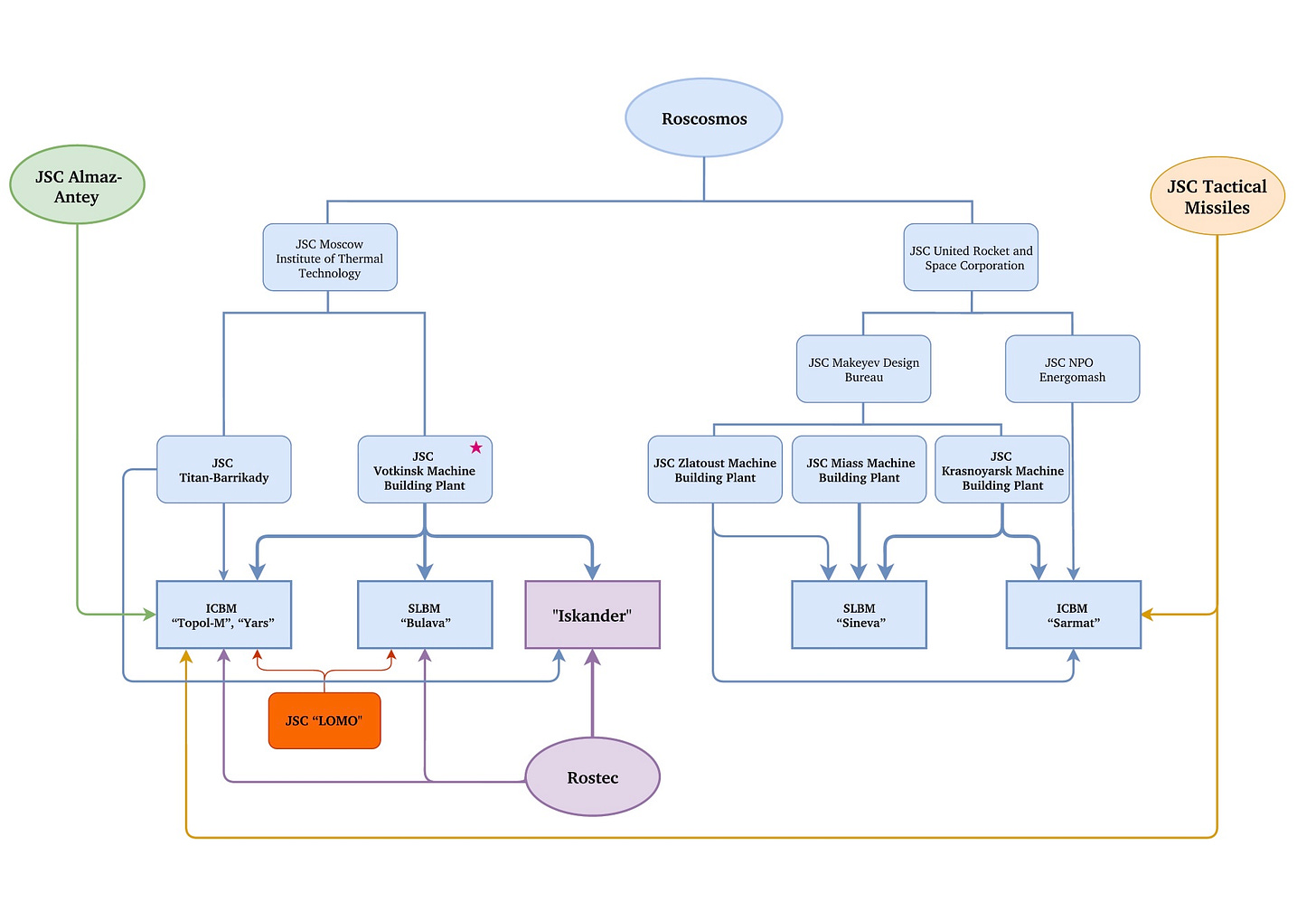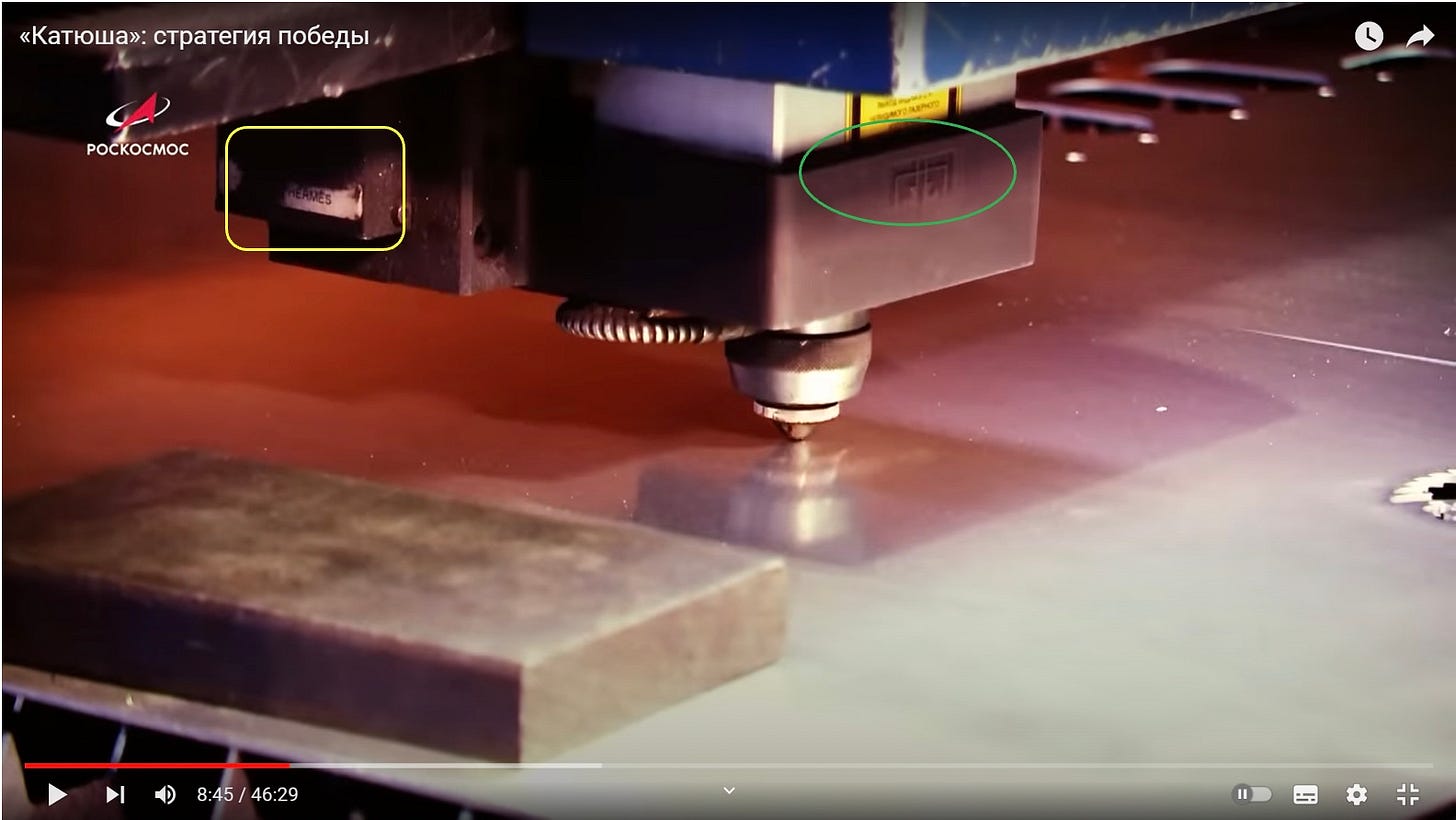Votkinsk Plant: How to make an "Iskander"?
Case study of a Russian intercontinental ballistic missiles producer
Intercontinental ballistic missile“Yars” on the Votkinsk factory floor (8:14)
The Russian military doctrine is missile-centric. Serving as the principal means of WMD delivery, long range ballistic and cruise missiles secure the Russian capacity to execute nuclear blackmail. Their manufacture and maintenance continuing despite the unprecedentedly wide sanctions regime suggests that the targeting and implementation of sanctions are incorrect. At this point, sanctions are highly inefficient in undermining the Russian military production capacities and, therefore, its war efforts. With this investigation, we propose a new look into the Russian missile industry’s chokepoints, specifically in its industrial equipment and production processes.
The power of OSINT is underestimated. Operating under the regime of secrecy, the Russian strategic missile industry appears to be impenetrable. And yet, we have managed to build a representative picture of its manufacturing base, with its bottlenecks and chokepoints, based exclusively on the publicly available sources. That is because secrecy considerations often come into conflict with other rationales that require the missile producers themselves, their counteragents, or the state to disclose potentially sensitive information rather than to hide it. Some of the more common rationales include:
Propaganda needs. The military buildup is a major source of national pride and, therefore, of regime’s legitimacy. Consequently, authorities feel pressured to convey a picture of the well-equipped, modern military industry to the general audience. This makes federal and regional TV channels a principal source of visual evidence on the military production.
Market needs. Since the fall of the USSR, the military industry has been directly engaged in the competitive market, both as a seller and as a buyer. Whereas higher secrecy plants can be selective about the information they publish themselves, they are not always capable of censoring what their counteragents, including their employees, suppliers or contractors choose to publish.
Accountability needs. Direct engagement of the military plants into market relations exacerbated the pre-existing principal-agent problem in relations between the state and the state-owned military enterprises. Aiming to check the managerial corruption, the state developed an extensive and transparent system of public procurements. As it developed, it became an invaluable tool both for the state controllers and for our investigation.
In this introductory material we demonstrate our method on example of a single Russian strategic missiles producer: the Votkinsk Plant. As a part of Roscosmos defence corporation, it is the only producer of solid-propellant ICBMs/SLBM and SRBMs in the Russian Federation.
HOW IS PRODUCTION ORGANIZED?
Roscosmos is a Russian state corporation responsible both for civilian aerospace programs and for maintaining the nuclear deterrence system. It is the sole producer of intercontinental ballistic missiles in Russia, including strategic ICBMs and SLBMs.
The military production of Roscosmos is concentrated within two defense holdings:
Makeyev Design Bureau (Makeyev) - liquid-propellant
Moscow Institute of Thermal Technology (MITT) - solid-propellant
Within the MITT structure,
Votkinsk Machine-Building Plant - produces missiles
Titan-Barrikady - produces missile launchers/TELs
Making the Votkinsk Plant the only manufacturer of solid propellant ICBMs/SLBMs and SRBMs in Russia. This includes ICBM “Yars”, SLBM “Bulava” and SRBM “Iskander-M”.
ICBM“Yars” at the Votkinsk Plant (8:55)
STEP 1: VOTKINSK PLANT IN STATE PROPAGANDA
Roscosmos official channel «Roscosmos TV», Video “Katyusha: strategy for victory” from Dec 17, 2020 offers abundant visual information on machine tools used in the production of missiles:
At 8:43 we can briefly see a screenshot of a laser machine tool.
There is a close-up at 8:45
We can safely assume that this video shows a punch laser machine produced by the Italian company Prima Power. This is indicated by a characteristic logo[1] [2].
On the left part of the screen you can notice the Hermes sensor logo. All of that will help us later, to identify the specific machine and the supply chain.
8:48 You can see a Primach-20l CNC control panel, presumably for the same machine.
This is as far as TV propaganda videos can bring us. In order to establish the exact model of equipment, when and how it ended up on the Votkinsk Plant, and to trace back the supply chain, we need to resort to the public procurements data.
STEP 2: USING PUBLIC PROCUREMENTS DATA
Public procurements are the most mass and the most informative source on the military industry’s economic activities. Aiming to check the managerial corruption and to align activities of the individual producers with the broader policies of state, authorities developed an extensive electronic system of public procurements. Procurement listings often include the information on the specific model of equipment acquired, its price, suppliers, technical specifications, and so on. Overall, the public procurements are as close as we can get to the ultimate and exhaustive source on the Russian military manufacturing base. Still, they have limitations.
Keep reading with a 7-day free trial
Subscribe to Rhodus Intelligence to keep reading this post and get 7 days of free access to the full post archives.








